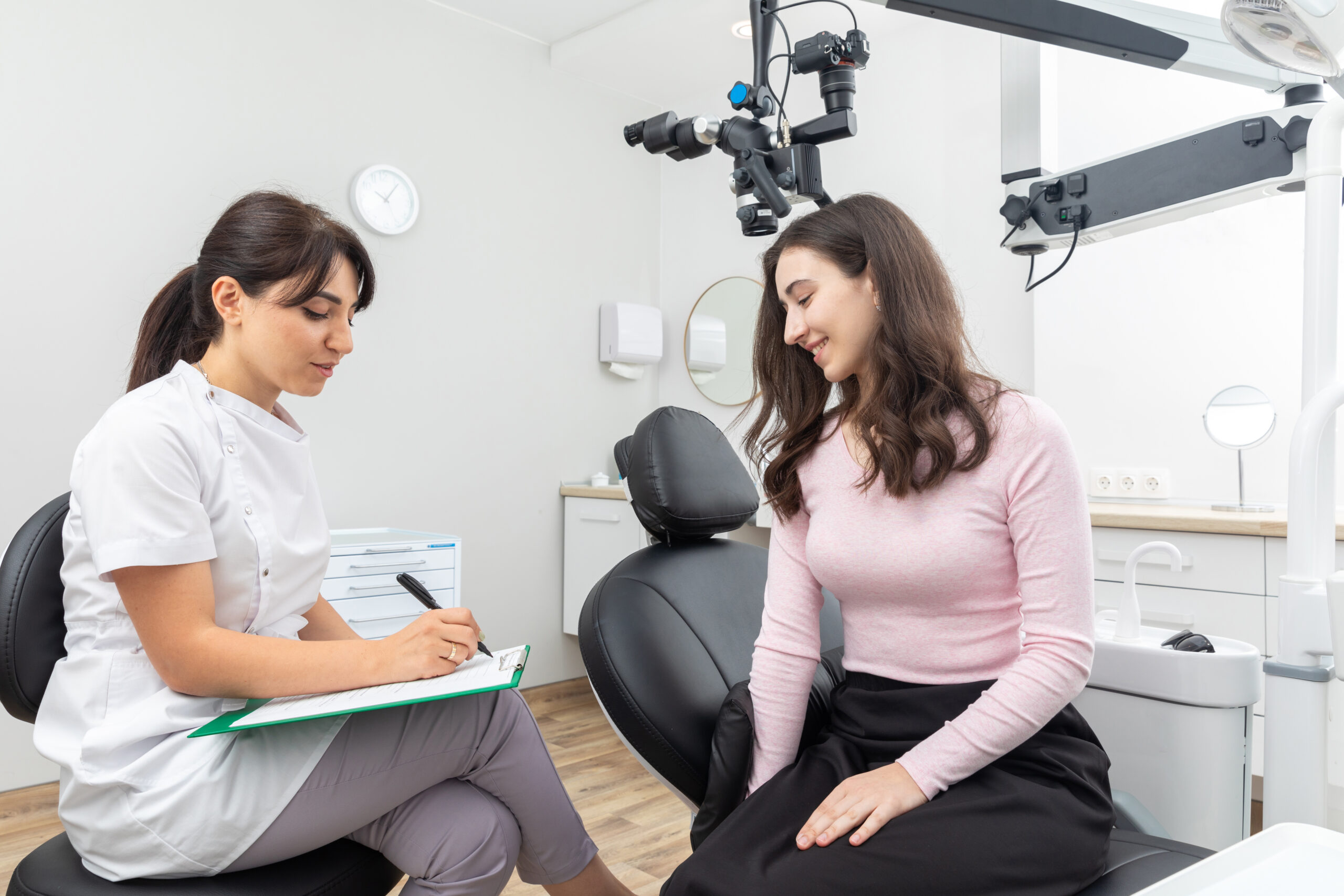Opioid Abuse Following Dental Treatment
Case Study
Marc Leffler, DDS, Esq.
June 14, 2022
Reading time: 7 minutes

Underlying Facts
Dr. D was a well-experienced general dentist who practiced in a small rural town, in which he was the only dentist. As a result of the lack of any dental specialists located less than nearly an hour away, he was familiar with practicing the full scope of dentistry, including extractions and other oral surgery procedures, so he felt confident addressing post-operative concerns.
In the week following high school graduation, he saw an 18-year-old male patient whom he had treated for many years. The patient, “P”, had been admitted to enter trade school to become a carpenter in early September, so he wanted to have his lower right wisdom tooth, which had been bothering him episodically, treated before beginning school. Dr. D examined P clinically and radiographically, and found tooth #32 to be soft tissue impacted, in a vertical position with roots not fully formed, and with the surrounding gingiva slightly inflamed; due to the gingival condition, a prescription was given for Penicillin, to be taken for five days before returning for the extraction. The patient fully complied and returned as scheduled.
On the date of treatment, Dr. D made a conservative soft tissue incision and elevated the tooth out of its socket before placing a single suture. Prior to leaving the office, P said to the dentist, “I’m a real baby, so please give me something strong for the pain.” Against his better judgment, given the ease of extraction, Dr. D provided a prescription for 20 tablets of acetaminophen with codeine – 1-2 tablets every 4 hours, as needed for pain – and instructed the patient to also finish the remaining two days’ worth of Penicillin. When Dr. D called P the following morning, P said that he was literally writhing in pain, so Dr. D told him to use local measures and take the pain medications.
The patient appeared at the office on the third post-operative day, complaining of severe pain (10 on a scale of 10) and having used all of the pain medications prescribed. P asked for something even stronger, and although Dr. D could not clinically account for such severe pain based upon what he saw when examining the site, he wrote a prescription for 15 hydrocodone pills, with instructions to take 1 every 4 hours, only as needed. P continued to contact the dentist daily, with ongoing pain complaints, so at the suture removal visit a week following extraction, Dr. D gave P a prescription for 20 oxycodone tablets with the same frequency instructions, despite all clinical signs showing a well-healing extraction site and adjacent areas. Three days later, P called the office, saying that he was still in pain and that he had run out of pills, so he needed more; Dr. D knew that this meant that P was taking more pills than the prescription called for, but he gave a refill anyway.
The process continued for the next five weeks, with phone calls, office examinations, and additional prescriptions given. Dr. D received a call from P’s father, who was also his patient, saying that P had been admitted as an in-patient to a drug treatment facility, pursuant to court order, following his arrest for driving under the influence of narcotics. P remained in the facility for more than three months, so he was unable to begin school, and was re-admitted to the treatment facility shortly after getting into a physical altercation at home with his younger sister.
Legal Steps Taken
At the suggestion of the attorney consulted to review the events and advise P’s parents, P’s father, “F”, was appointed by the court as P’s Guardian, so as to be able to handle all of P’s matters, and make decisions on his behalf, for health, legal and all other issues. The first thing that F did was to seek and obtain a court mandate to keep P in the facility until the court directed otherwise.
F’s next step was to file a lawsuit on behalf of his son, against Dr. D, claiming negligent treatment in his prescribing of narcotics at the surgical visit, and then prescribing more potent opioids going forward, without clinical signs demonstrating their need, to the point that P became addicted to these drugs and unable to function without them.
The suit sought, as damages, monetary compensation for P’s pain and suffering, up until then and extending into the future, for lost potential earnings due to his not being able to enter trade school, and for the drug treatment facility costs borne by F. Upon his being served with papers, Dr. D contacted his malpractice carrier, and was provided counsel to defend the negligence/malpractice claims.
In the early days of the litigation, the defense counsel provided by the insurance carrier filed a motion to dismiss the claim for lost earnings on the ground that admission to any school does not guarantee successful completion of the course of study with graduation, thereby making F’s claim on that aspect speculative. The court agreed and dismissed just that component of the claim, leaving everything else intact.
With counsel unable to obtain expert support for the defense, the case was settled for a substantial sum. Dr. D was also sanctioned by his State Dental Board, suspended from practice for six months, required to take continuing education in the prescribing of narcotics, and fined.
Takeaways
The American opioid crisis continues to expand and worsen, with dentistry becoming an increasingly involved part. A 2018 retrospective large group study regarding 2015, performed at the Stanford University School of Medicine and published in JAMA Internal Medicine, reported alarming results relating to dentists and dentistry: (1) 5.8% of studied patients, age 16-25, who received their initial prescription of opioids from their dentist were diagnosed with opioid abuse during the 12 months following that initial prescription; (2) of the 13% of those studied in this age population who received opioid prescriptions, 30% of those received them from their dentist; and (3) the median number of narcotic pills received from their dentist by patients in the study who became addicted was 20. The study eliminated all people who had received any opioid prescriptions, or who had been diagnosed with opioid abuse, within the year prior to receiving opioids from a dentist, in order to try to focus in on the issue studied.
While it is not the purpose in evaluating this case study to suggest to dentists whether they should prescribe narcotics, non-steroidal anti-inflammatory drugs, over-the-counter medications, or nothing at all, the facts of this case point out the potential dangers associated with one of these types of medications — at the exclusion of potential dangers of other types of medications — in an effort to simply raise awareness in this realm.
The court’s dismissal here of the lost earnings claim, as speculative, conceptually speaks to any aspect of any claim. Unless there is a fact-based, reasonable basis for a plaintiff’s assertion for which s/he seeks compensation, it will not be permitted to proceed. Hunches, suppositions, and hypotheses which are used to try to prove any element of a lawsuit will be excluded and will serve as a bar against the viability of cases — or portions of cases — because factual proof and expert opinions held to a reasonable degree of dental certainty are the necessary components for a case’s success; defense counsel who are able to demonstrate to the court that any element of a plaintiff’s claim has no factual basis or has no science-backed foundation will effectively have the claim or portion of the claim dismissed “as a matter of law”.
Finally, we address the issue of the patient’s complaints, which were inconsistent with Dr. D’s clinical findings, as he continued prescribing narcotics. Such a scenario is not uncommon in circumstances involving patients who are becoming addicted and/or who may be passing the narcotics off to others. In any case, it should serve as a warning sign, just as any other aspect of dental practice when things simply do not make sense. These situations are of the type that might warrant the dentist to suggest that the patient obtains a second opinion — as geographically inconvenient as that could be — to make sure that the path being travelled is an appropriate one; it is also potentially protective in the event that, like here, a bad outcome develops and litigation ensues.
Note that this case presentation includes circumstances from several different closed cases, in order to demonstrate certain legal and risk management principles, and that identifying facts and personal characteristics were modified to protect identities. The content within is not the original work of MedPro Group but has been published with consent of the author. Nothing contained in this article should be construed as legal, medical, or dental advice. Because the facts applicable to your situation may vary, or the laws applicable in your jurisdiction may differ, please contact your personal or business attorney or other professional advisors if you have any questions related to your legal or medical obligations or rights, state or federal laws, contract interpretation, or other legal questions.
Additional Risk Tips content

IAN Injury After Local Anesthesia: Legal and Clinical Takeaways
Explore a real-world dental malpractice case involving inferior alveolar nerve (IAN) injury after local anesthesia. Learn key risk management principles, the role of informed consent, and how deposition testimony can influence case outcomes.

Canceled Joint Replacement Results from Dentist’s Lack of Awareness
Learn how a dentist’s lack of awareness of new protocols can lead to major inconveniences for a patient.

Difficult Patient Sues Dentist After Improper Dismissal and Jousting
This article explores a scenario where a dentist faces a malpractice claim and board complaint after improperly dismissing a difficult patient. Learn the essential steps for proper patient dismissal to protect your practice and license.
This document does not constitute legal or medical advice and should not be construed as rules or establishing a standard of care. Because the facts applicable to your situation may vary, or the laws applicable in your jurisdiction may differ, please contact your attorney or other professional advisors if you have any questions related to your legal or medical obligations or rights, state or federal laws, contract interpretation, or other legal questions.
MedPro Group is the marketing name used to refer to the insurance operations of The Medical Protective Company, Princeton Insurance Company, PLICO, Inc. and MedPro RRG Risk Retention Group. All insurance products are underwritten and administered by these and other Berkshire Hathaway affiliates, including National Fire & Marine Insurance Company. Product availability is based upon business and/or regulatory approval and/or may differ among companies.
© MedPro Group Inc. All rights reserved.